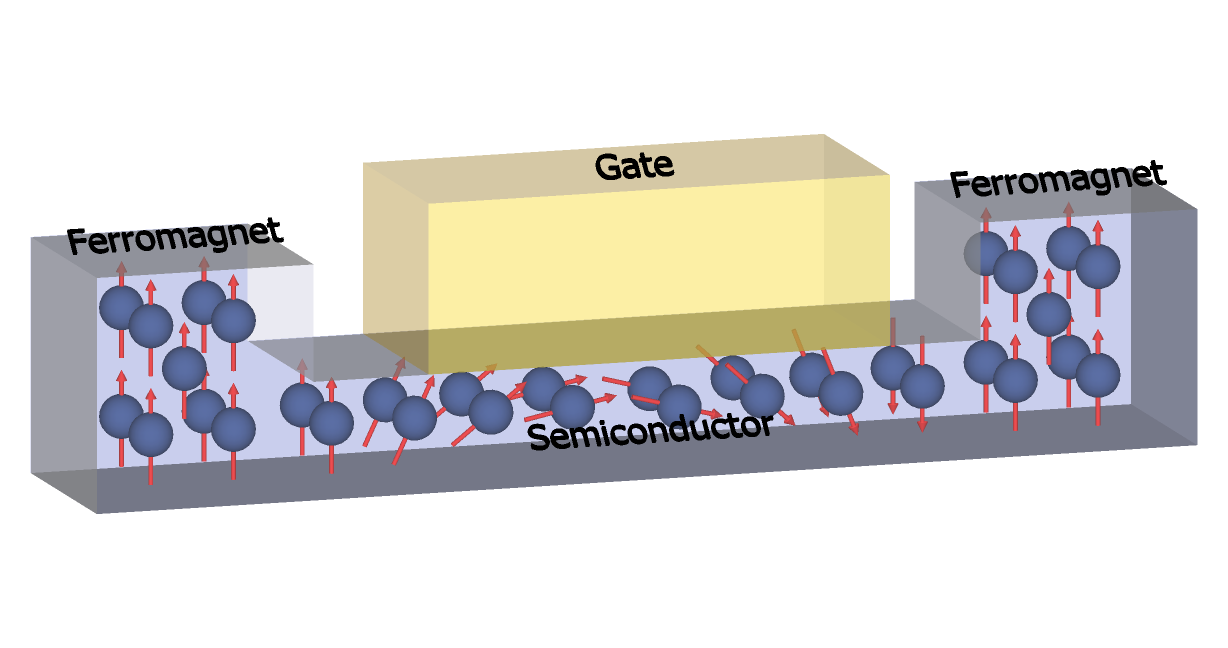Animation: Relativistic quantum mechanics offers a possibility of purely electrical reversible switching of an antiferromagnet by means of the staggered magnetic fields delivered individually to each magnetic sublattice.
Workshop Introduction
With MOSFET scaling gradually coming to an end, the search for new devices working on novel principles is accelerating. Another intrinsic electron characteristic, the electron spin, attracts much attention as a complement or even a potential replacement of the electron charge used for information processing in modern electronics (Figure). Spintronics is a rapidly developing field of electronics based on the electron spin and magnetic moments dynamics, spin-dependent transport in tunnel junctions, spin transport, spin coherence and correlations in semiconductors and other materials.
Despite recent experimental demonstrations of SpinMOSFETs at room temperature the research is still in its fundamental stage as spin injection and electric spin manipulation in silicon are not efficient and new injection and controlling principles are urgently needed.
Magnetic tunnel junctions (MTJs) are characterized by a larger tunneling magnetoresistance ratio, which in combination with fast purely electrical magnetization switching by means of spin transfer torque, makes magnetic tunnel junctions (MTJs) excellent candidates for future universal non-volatile memories. Logic operations can also be carried out in an array of MTJs or nanomagnets opening an opportunity to build intrinsic logic-in-memory systems beyond the ubiquitous Von Neumann architecture.
Recent groundbreaking demonstrations of purely electrical manipulation of the order parameter in antiferromagnets, detected by the anisotropic magnetoresistance effect, opens these materials for memory applications, with a promise of even faster switching and smaller currents than in state-of-the-art MTJs.
Last but not least, the electron spin offers the possibility to use not only its spin up/down projections, but the whole Bloch sphere, which holds the potential of quantum information processing based on spin.
 International Conference on Simulation of Semiconductor Processes and Devices 2016
International Conference on Simulation of Semiconductor Processes and Devices 2016